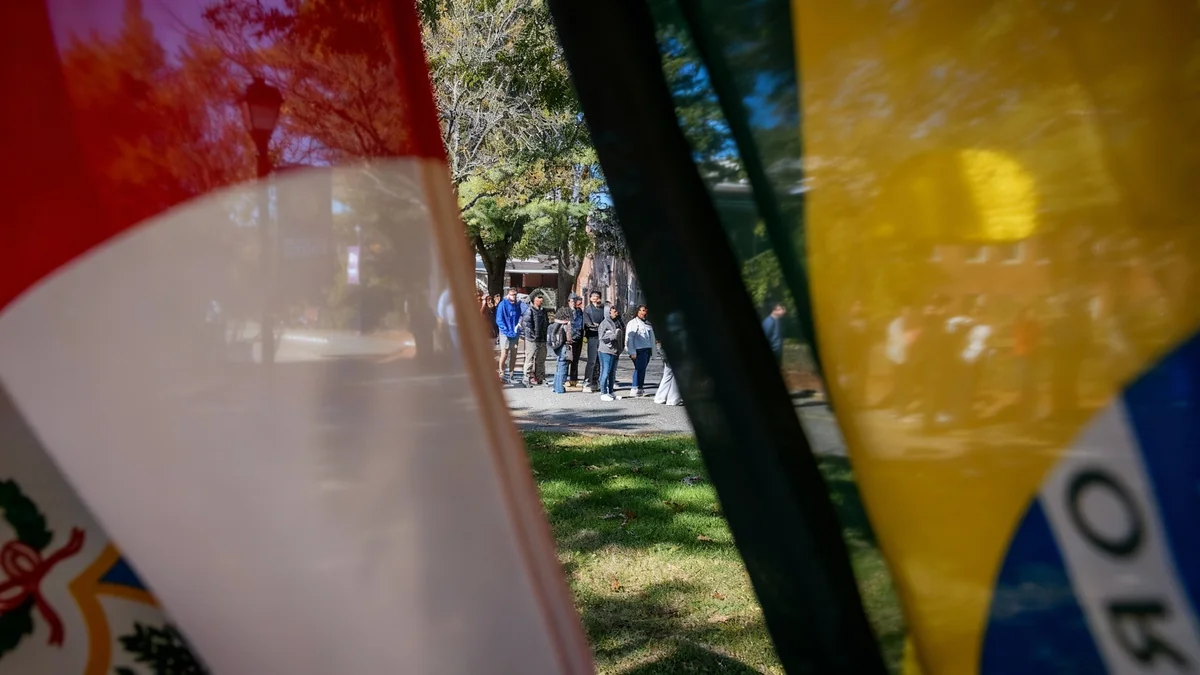Colleges and universities across Massachusetts' Pioneer Valley are reporting a noticeable decline in international student enrollment, a trend that mirrors a broader national pattern. This downturn, which excludes the unique circumstances of the pandemic years, reflects the lowest number of new foreign student arrivals in the United States in over a decade, raising concerns about cultural diversity and economic stability on local campuses.
Key Takeaways
- Institutions in the Pioneer Valley are experiencing a significant drop in new international student numbers.
- This local trend aligns with a national decade-low in foreign student arrivals in the United States, not counting the pandemic era.
- Factors contributing to the decline include global competition, complex visa processes, and the high cost of American higher education.
- The decrease impacts campus diversity, local economies, and university budgets that rely on international tuition fees.
A National Trend Hits Home in Western Massachusetts
Educational institutions throughout the Pioneer Valley, a region known for its cluster of prestigious colleges and universities, are grappling with a significant challenge: fewer international students are enrolling. This development is not isolated to Western Massachusetts; it is part of a larger, nationwide shift. According to recent data, the U.S. is witnessing a sustained drop in new international student enrollment, reaching levels not seen in over ten years, once the pandemic's disruptions are set aside.
This decline affects the entire spectrum of higher education in the region, from large public universities to smaller private colleges. The presence of international students has long been a cornerstone of the academic and cultural environment in the Pioneer Valley, enriching classrooms and communities alike.
The Importance of International Students
International students contribute significantly to U.S. higher education. They bring diverse perspectives to academic discussions, foster global connections, and are crucial to many graduate-level research programs, particularly in STEM fields. Economically, they contribute billions of dollars annually through tuition, housing, and other living expenses.
Analyzing the Factors Behind the Decline
The reasons for this downward trend are multifaceted, stemming from a combination of global and domestic pressures. University administrators and education analysts point to several key factors that are making the United States a less attractive destination for students from abroad.
Increasing Global Competition
One of the most significant factors is the rise of strong competition from other English-speaking countries. Nations like Canada, the United Kingdom, and Australia have actively streamlined their immigration policies and visa application processes to attract international talent. These countries often present a clearer, more welcoming pathway to post-graduation work opportunities, a major incentive for many students.
"We are no longer the only top choice for the world's brightest students," stated a senior admissions officer from a regional university. "Countries in Europe and Asia are also investing heavily in their higher education systems, offering high-quality programs at a fraction of the cost."
Economic and Logistical Hurdles
The financial burden of studying in the U.S. remains a primary obstacle. The high cost of tuition, combined with a strong U.S. dollar, makes an American education prohibitively expensive for many families. This economic pressure is compounded by a complex and often unpredictable visa application process.
Students face long waits for interviews and stringent requirements, with no guarantee of approval. According to reports from educational consultants, these visa uncertainties often lead prospective students to choose countries with more straightforward and reliable entry procedures.
By the Numbers: Economic Impact
According to NAFSA: Association of International Educators, international students contributed $33.8 billion to the U.S. economy and supported over 335,000 jobs during the 2022-2023 academic year. A decline in enrollment directly threatens this significant economic contribution.
The Ripple Effect on Campuses and Communities
The decrease in international students creates a ripple effect that extends beyond university admissions offices. The impact is felt across campus life, in the local economy, and within the academic programs themselves.
Loss of Campus Diversity
A primary concern is the erosion of cultural diversity on campus. International students bring unique viewpoints and life experiences that enrich the learning environment for domestic students. Their absence can lead to a more homogenous campus culture, limiting the global exposure that is a key component of a modern university education.
"When you lose students from different parts of the world, you lose conversations, you lose perspectives," an international student advisor explained. "Our domestic students miss out on the opportunity to build a global network and develop cross-cultural understanding without leaving their own campus."
Economic Consequences for the Pioneer Valley
For the towns and cities in the Pioneer Valley, the economic impact is tangible. International students pay out-of-state tuition rates, which are a critical source of revenue for both public and private institutions. This income helps subsidize costs for domestic students and funds academic programs and campus infrastructure.
Beyond tuition, these students spend money on housing, food, transportation, and local retail, supporting jobs and businesses in the surrounding communities. A sustained decline in their numbers could lead to budget shortfalls for universities and a slowdown in the local economy.
How Pioneer Valley Institutions Are Responding
In response to these challenges, colleges in the region are not standing still. They are actively developing and implementing new strategies to attract and retain students from around the globe.
- Targeted Recruitment Efforts: Universities are diversifying their recruitment efforts, focusing on emerging markets in Southeast Asia, Africa, and Latin America, rather than relying solely on traditional markets like China and India.
- Financial Incentives: Some institutions are creating new scholarships and financial aid packages specifically designed for international applicants to help offset the high costs.
- Streamlined Support Services: On-campus support is being enhanced, with more resources dedicated to helping international students navigate everything from visa regulations to cultural adjustment.
- Global Partnerships: Many colleges are forging stronger partnerships with universities abroad, creating pathway programs and dual-degree options that can make studying in the U.S. more accessible.
The goal is to send a clear message that international students are welcome and valued in the Pioneer Valley. However, reversing a national trend will require a concerted effort not just from individual institutions, but also through broader changes in national policy to make the United States a more competitive and welcoming destination for global talent.





